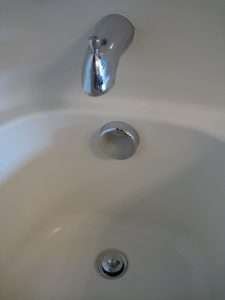
A clogged bathtub drain can be a major inconvenience, causing standing water and preventing you from enjoying a relaxing bath. Fortunately, there are several simple methods you can try before calling a plumber. In this blog post, we will outline effective techniques to unclog your bathtub drain and get it flowing smoothly again.
Remove Debris: The first step is to remove any visible debris from the drain. Wear gloves and use a pair of needle-nose pliers or tweezers to carefully pull out any hair, soap residue, or other materials that may be causing the clog. Dispose of the debris properly.
Boiling Water: Boiling water can sometimes dissolve or dislodge minor clogs. Start by boiling a pot or kettle of water. Carefully pour the boiling water directly into the drain in two to three stages, allowing a few seconds between each pour. Be cautious not to splash the boiling water on yourself. This method is most effective for organic matter-based clogs.
Baking Soda and Vinegar: Another natural and effective remedy involves using a combination of baking soda and vinegar. Begin by pouring a pot of hot water down the drain to wet it. Then, pour half a cup of baking soda into the drain, followed by half a cup of white vinegar. Cover the drain with a plug or a cloth immediately to trap the fizzing reaction. Allow the mixture to sit for 15-20 minutes. Finally, flush the drain with hot water to clear the clog. This method is suitable for mild to moderate clogs.
Plunger: A plunger can be a handy tool for dislodging stubborn clogs. Ensure the drain is covered with enough water to cover the rubber part of the plunger. Position the plunger over the drain and vigorously pump it up and down for about a minute. Then, pull the plunger off quickly to create suction. Repeat this process a few times to break up the clog. Afterward, flush the drain with hot water to clear any remaining debris.
Drain Snake: For more challenging clogs, a drain snake (also known as a plumbing auger) can be effective. Insert the snake’s flexible end into the drain and rotate it clockwise while gently pushing it forward. This will help break up and dislodge the clog. If you encounter resistance, rotate the snake in the opposite direction to withdraw it. Once the clog is broken up, run hot water through the drain to flush it out.
Chemical Drain Cleaners (as a last resort): If the above methods fail, you can consider using a chemical drain cleaner. However, exercise caution and follow the manufacturer’s instructions precisely, as these cleaners can be harsh and may damage your pipes if not used correctly. Chemical drain cleaners should only be used as a last resort and in a well-ventilated area.
Conclusion: With these effective methods, you can tackle most bathtub drain clogs on your own. Remember to use preventive measures like installing drain screens to catch hair and debris and regularly cleaning your drains to minimize future clogging issues. If the problem persists or if you have concerns about your plumbing system, it is advisable to seek professional assistance from a licensed plumber.

